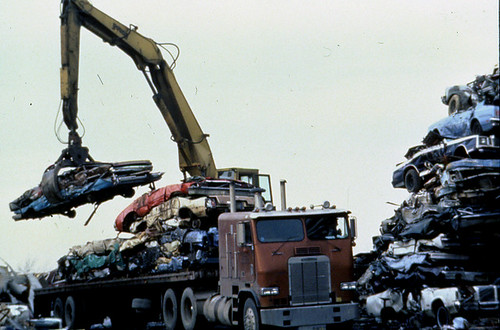Southwest aims to paint the skies green with its “Green Plane” initiative
(Source: PR News Wire)

Yesterday Southwest announced at its annual Media Day a “green plane,” an innovative idea that marries efficiency, environmentally responsible products, Customer comfort, and reduced waste and weight. This plane, a Boeing 737-700, will serve as a test environment for new environmentally responsible materials and Customer comfort products. All of the initiatives being tested on this Green Plane, when combined, will equate to a weight savings of almost five pounds per seat, thus saving fuel and reducing emissions, along with adding recyclable elements to the cabin interior and reducing waste.
“Southwest is committed to continuing to lead the industry in emissions reductions through fuel efficiency. Efficiency in fuel consumption benefits our Company as well as the environment, and this has been part of our business model since the beginning,” said Gary Kelly, Southwest’s Chairman, President, and CEO. “As we look to the future, we know climate change remains of vital importance to our industry, our Company, and our Customers, so Southwest works hard every day in every area to be a responsible steward of the environment.”
Southwest has designated one aircraft to serve as a test for eco-friendly products, which include:
- InterfaceFlor Carpet – reduces labor and material costs because it is laid in carpet squares, thus eliminating the total replacement of areas such as aisles. The carpet is totally recyclable and the manufacturing process is dedicated to being completely carbon neutral.
- Seat covers – offers more than twice the durability than the current leather seats as well as a weight savings per seat of almost two pounds. They are recyclable and have an environmentally- friendly manufacturing process.
- Life Vest Pouch – more environmentally friendly because it offers a weight savings of one pound per passenger. The smaller pouch creates more room under the seat for carryon items.
- Foam Fill – A lighter weight fill from Garnier PURtec in the back of the seats that reduces weight while providing increased customer comfort.
- Wind Screen – bulkhead product that lasts longer than the current leather product, thus reducing labor costs and waste.
- Aisle Rub Strips – switching from plastic to aluminum will help with durability, which reduces waste, as well as being recyclable.
In addition to the green plane, Southwest also announced the Nov. 1 kickoff of its more robust onboard recycling program, which is a co-mingled system that will allow the airline to capture more recyclable material and divert it from the waste stream. This 18-month process involved team work from all areas of the Company to implement the program on the ground at its Provisioning Bases and re-working of waste collection procedures in the cabin. The following are what Southwest calls “Doing the Right Thing”, published on their website:
Recycling And Waste Recovery: Southwest is implementing a more robust, systemwide recycling program. This systemwide co-mingled recycling program will take our current recycling efforts to the next level. By identifying opportunities to reduce, eliminate, or recover energy from our waste streams, we improve our waste management efficiencies and divert a substantial amount of material from landfills.
Water Conservation: Water is one of our most valuable resources and reducing our consumption is important to Southwest Airlines. We implement water savings ideas, including low flow water saving plumbing, auto shutoff water faucets, meeting LEED™ standards for efficient water use at new facilities, landscaping with native and drought-tolerant plants, and recycling the water used in our engine wash program. Along with reducing our water use, it is important that we keep water sources pure and support pollution prevention by reducing the chance of contamination.
Energy Savings: We are committed to pursuing Leadership in Energy and Environmental Design (LEED™) standards in new construction. By taking steps to reduce the amount of energy we consume, and to purchase our energy from renewable resources. We are proud to be a member of the Environmental Protection Agency’s Green Power Leadership Club for our purchase of renewable energy credits.
Noise Reduction: Southwest strives to be a good neighbor in every community we serve. We have taken steps to mitigate noise by ensuring our entire fleet meets current aircraft noise standards. The addition of our winglets and engine modifications have yielded a quieter aircraft that creates less noise when taking off and landing, plus our Pilots typically use noise abatement procedures that enable us to minimize noise impact in communities near the airports we serve.
Click here to read more. Also, click here for an interesting Green Plane FAQ published on the airline’s website.


 At a recycling plant in San Pedro and five other similar operations around California, giant shredding machines annually reduce 1.3 million junk cars, refrigerators and other appliances into fist-sized chunks of metal.
At a recycling plant in San Pedro and five other similar operations around California, giant shredding machines annually reduce 1.3 million junk cars, refrigerators and other appliances into fist-sized chunks of metal.
